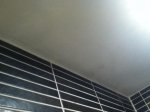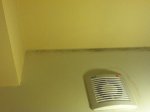taniaaust1
Senior Member
- Messages
- 13,054
- Location
- Sth Australia
Its the mold spores in the AIR which are the issue. I had a mold inspector come out to my house and he told me even if it was removed all from the walls, it is still there as its in the air. He recommended not just removal from walls/ceiling but also ozone? I think it was, to be put throu the house to actually kill it. You can not remove black mold from a house just from getting it off of walls.
In my own case it is possible mold has played a part in my illness. Mark.. I also had those symptoms quite severely you described (but dont get them anymore). I live in government housing and there was a huge water issue in this house for years (the housing people actually accused me of tipping water onto the floor!!). My mother once stayed the night in my lounge room floor on a mattress and woke up with a very damp bed.
What I know now was going on is there must of been a leak up in the roof tiles and when it rained, water must of been getting down in the walls and then seeping or travelling under the floor boards to which point it would start appearing most in between the floor boards inside.. I'd actually get very shallow puddles inside. After that issue had been going on for 2-3 years (mostly in winter), the housing people did routine maintance on all the houses in my street and regrouted all the tiles and that water issue stopped occuring.
To add to that my bathroom had no ventilation at all (only a tiny wide out window which only wound out a wee bit.. no fan either and I had a disabled child/teen who was incontinent.. so required lots of showering/baths. My whole bathroom roof was COMPLETELY covered in mold.. one a fine black mold (there was also two other types of minds up there). There was mold also over the walls in that room. Due to water condensation in my house with all the water issues.. I also got what looked like black mold growing on other house windows inside the house.
At the time I was far too ill (the whole roof was covered in mold while I was completely bedridden) to even try to clean up this mold. (my eldest daughter developed asthma). When I finally was a little better and well enough to stand on a chair.. I wiped all the surfaces over with bleach. That further just added to my issues and I got terribly sick from the bleach (breathing and chest issues).
I strongly suggest not to try to go cleaning such mold issues yourself but to get an expert in. (I do improve some when Im staying away from my house). Fortunately I nowdays have a roof fan in that bathroom and no leaks in the roof nowdays but I strongly suspect even now with no water issues.. this place is still affecting me some. I know this house actually affects visitors who have stayed the night even thou that mold nowdays doesnt show, (they later complained my house had made them sick and two different people have told me that my house smells strongly of mold).
In my own case it is possible mold has played a part in my illness. Mark.. I also had those symptoms quite severely you described (but dont get them anymore). I live in government housing and there was a huge water issue in this house for years (the housing people actually accused me of tipping water onto the floor!!). My mother once stayed the night in my lounge room floor on a mattress and woke up with a very damp bed.
What I know now was going on is there must of been a leak up in the roof tiles and when it rained, water must of been getting down in the walls and then seeping or travelling under the floor boards to which point it would start appearing most in between the floor boards inside.. I'd actually get very shallow puddles inside. After that issue had been going on for 2-3 years (mostly in winter), the housing people did routine maintance on all the houses in my street and regrouted all the tiles and that water issue stopped occuring.
To add to that my bathroom had no ventilation at all (only a tiny wide out window which only wound out a wee bit.. no fan either and I had a disabled child/teen who was incontinent.. so required lots of showering/baths. My whole bathroom roof was COMPLETELY covered in mold.. one a fine black mold (there was also two other types of minds up there). There was mold also over the walls in that room. Due to water condensation in my house with all the water issues.. I also got what looked like black mold growing on other house windows inside the house.
At the time I was far too ill (the whole roof was covered in mold while I was completely bedridden) to even try to clean up this mold. (my eldest daughter developed asthma). When I finally was a little better and well enough to stand on a chair.. I wiped all the surfaces over with bleach. That further just added to my issues and I got terribly sick from the bleach (breathing and chest issues).
I strongly suggest not to try to go cleaning such mold issues yourself but to get an expert in. (I do improve some when Im staying away from my house). Fortunately I nowdays have a roof fan in that bathroom and no leaks in the roof nowdays but I strongly suspect even now with no water issues.. this place is still affecting me some. I know this house actually affects visitors who have stayed the night even thou that mold nowdays doesnt show, (they later complained my house had made them sick and two different people have told me that my house smells strongly of mold).



